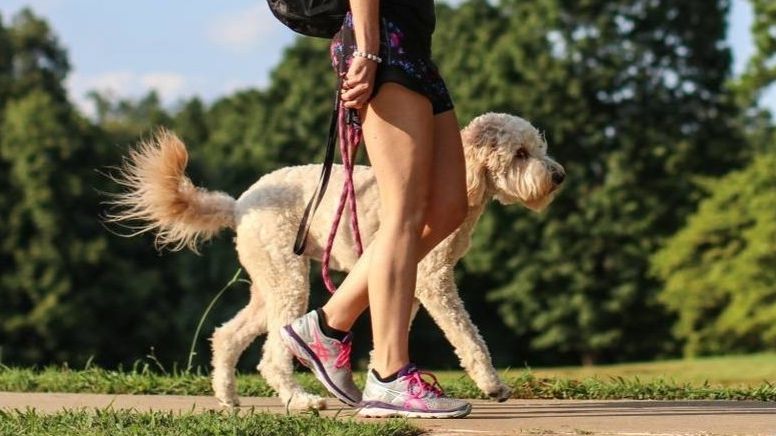Working Dogs Vs Companion Dogs: What’s The Difference?
Aug 13, 2019
I’ll be the first to admit, I was clueless about dogs growing up. I knew that I loved animals, but I never had the privilege of owning my own dog, so any knowledge I acquired came later in life. Even still, after owning my first dog, all I ever wanted was a companion to pal around with, who didn’t chew on my stuff, pull on a leash or jump. Yet somehow, the next dog I added to my life ended up being a working dog – Read: DRASTICALLY different.
As a KeenDog Trainer, I spend most of my time with companion dogs. However, since I currently own a working dog, I find that many people have LOTS of questions and quite a bit of confusion between the two types. So, let’s break it down a little and clarify the differences between the working and the companion dog!
A working dog is trained to perform tasks, either for sport or for a specific job that the dog is trained to do. There are LOTS of different types of working dogs – service, therapy, police, military, detection, search and rescue, herding, hunting, guarding property, pulling sleds, etc. Some working dogs compete in sports and within those sports, there are sub-categories such as agility, dock diving, racing, protection sports, etc. (the list could go on forever).
A companion dog, however, provides companionship as a pet, rather than performing specific tasks that a working dog needs in order to perform a particular job. At KeenDog, it is our mission to provide dog training programs that result in obedient, confident, well-socialized dogs that can venture out into the community with ease by your side. So while our KeenDogs definitely have certain commands we expect them to obey (sit, down, place, here, heel, etc.), they are not performing a job or service.
No matter what “job” you want your dog to do, there is one very distinct difference, however – how you train it. Sure, as handlers, we all use the same science-based training. In fact, I firmly believe that as a trainer/handler, we should constantly expand our base of knowledge so that we have many different tools in our tool bag and can pull out whichever one we feel is best for the job. The difference, however, comes in what we intend to bring out of that particular dog.
For example, my working dog, Aero, is a Belgian Malinois – a high-energy working breed typically intended for protection sports, police, military and detection work. They require a knowledgeable handler who will ensure they are worked physically and mentally every day, otherwise, they can become bored and destructive. Clearly, this is not a breed for the typical house pet. As a working dog, my intent is to bring out his drive and to channel it in appropriate ways such that he performs his job even better. Basically, the faster, stronger and more confident, the better. However, as a working breed, they have ZERO off switch! Since protection sports is a part of what I am working on with my dog, I do not reprimand him for barking and I don’t hold positions for any length of time, because I want him to be FAST!
I also want to get a companion dog soon, and my criteria for this dog will look vastly different. Sure, I want a dog that has some drive, such that he is eager to learn and excited for training time, but not so much drive that he has a hard time chilling out and relaxing around the house. The goal for my future companion dog will be to take him to group classes and social settings where dogs are allowed, so I want him to be able to adapt to any environment I put him in. The training I put into this dog will also look very different. For example, I definitely don’t want this dog barking at strangers and I will be asking this dog to hold positions (such as sits and downs) for long durations of time. So, while my methods may be the same as the working dog, I will be adapting them to bring out the calm, cool and collected pup that I intend this companion dog to be.
What I love about the dog world is this – we all have individual goals for our dog. The beauty behind this is that we are each uniquely different. Whether your goal is to have a wonderfully trained house-pet, a well-socialized pup that can explore the town with you, a service dog working towards helping you perform a specific task, a pup that protects you and your home, or a dog that competes in dog sports with you as a team.. each one of the “jobs” you have assigned to your dog should be celebrated! As long as you are being the best handler you can be, doing right by your pup, and having FUN together, no matter which task you have picked or what breed you own, the dog world is a better place because of you!



